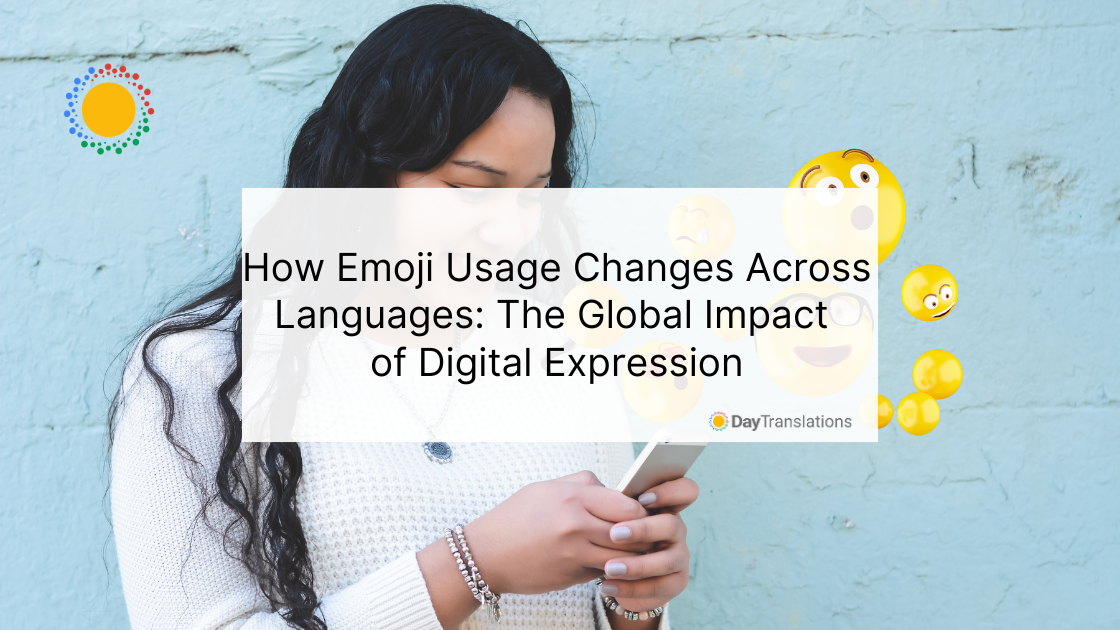We all use emojis, those tiny, expressive icons that brighten our texts and social media posts. But have you ever noticed that some people use emojis in different ways? Whether you’re chatting with friends in English, Spanish, Chinese, or Arabic, the little smiley faces, hearts, and thumbs-ups are not always interpreted the same way. In fact, digital expression can vary quite a bit across different languages and cultures. Let’s dive into how emoji usage changes around the world and how these digital symbols have become a universal way of expressing emotions, even when words don’t quite cut it.
Emojis: A Universal Language for Digital Expression?
The Power of Emojis
Emojis were invented to help us express emotions and ideas that might be hard to convey through text alone. For instance, a simple “thank you” can feel more sincere when followed by a 😊 (smiling face) or 🙏 (praying hands) emoji. They bring warmth, humor, and sometimes even sarcasm to our messages. But what’s even more fascinating is how emojis have evolved into a kind of “universal language.” You don’t need to know how to read or write in a certain language to understand the meaning behind a ❤️ (heart) or 😂 (face with tears of joy).
While it’s true that emojis can bridge language barriers, they don’t always mean the same thing everywhere. The way someone in the United States uses an emoji might be quite different from how someone in Japan or Brazil uses the same symbol. Why is that?
Digital Expression Across Different Languages
English-Speaking Countries: All About the Face
In English-speaking countries like the U.S., Canada, and the U.K., emojis that express facial emotions are the most popular. These are the classic smiley faces, laughing emojis, and heart eyes. For example, the 😂 (face with tears of joy) has been crowned one of the most popular emojis in English-language texts. It’s often used to show laughter or that something is hilarious. The 😉 (winking face) is another common one, used to indicate sarcasm or playfulness.
But even within these countries, people may interpret emojis differently depending on context. A simple 😊 (smiling face) could mean someone is genuinely happy, or it might have a hidden message, like “I’m being polite, but I’m not really happy.”
Asian Languages: A Love for Nature and Symbols
In countries like Japan and China, emojis often reflect cultural symbols and traditional values. For example, in Japan, flowers, nature, and food emojis are extremely popular. The 🍡 (dango, a type of Japanese sweet) or 🍣 (sushi) emojis are used frequently in conversations. Nature symbols like 🌸 (cherry blossom) or 🌞 (sun with face) are also very common, as they connect to the country’s appreciation for seasons and natural beauty.
Interestingly, Japanese users tend to use emojis not just to express emotions. They also use it to add a layer of meaning or decoration to their messages. A simple “good morning” might be followed by a 🌞 (sun) to give the greeting more warmth and friendliness. In Chinese, the 🧧 (red envelope) emoji is used a lot during Lunar New Year celebrations, as red envelopes represent gifts of money for good luck.
Middle Eastern Languages: A Focus on Gestures
In Arabic-speaking countries, emojis that show hand gestures or symbols of respect are more frequently used. For example, the 🙏 (folded hands) emoji is often used to show gratitude, prayer, or even a polite request. The thumbs-up emoji 👍 is also very common in the Middle East, frequently used to signal agreement or approval.
Unlike English users who might toss in a random smiling face to make a message friendlier, in the Middle East, emojis often carry deeper meanings. For instance, the 🧕 (woman with headscarf) emoji is used to represent Muslim women, while the 🕌 (mosque) emoji may be used in religious contexts. There’s often more formality in how emojis are used in these regions compared to the lighthearted approach seen in Western countries.
Latin America: Heartfelt and Full of Passion
In Latin American countries, particularly those that speak Spanish or Portuguese, emoji usage tends to be more emotional and affectionate. Hearts and love symbols are incredibly popular. For example, the ❤️ (red heart) and 😘 (face blowing a kiss) are used frequently in texts and social media to show affection, friendship, and love. Even simple conversations between friends often include multiple heart emojis, creating a more personal and passionate tone.
Latin Americans are also big fans of the 🎉 (party popper) emoji. This one is used in celebrations, from birthday wishes to congratulatory messages. The 🎶 (musical notes) emoji is another favorite, often used in connection with songs, dancing, or fun events.
The Global Impact of Emojis
A Digital Expression Revolution
Emojis have revolutionized how we communicate, especially in a world where digital interactions are increasingly replacing face-to-face conversations. With emojis, we can express our feelings instantly. For example, in texting, adding a crying emoji 😢 or an angry face 😡 immediately shows how we’re feeling without needing long explanations.
Moreover, emojis help break down language barriers. Imagine trying to communicate with someone who doesn’t speak your language. You could send them a smiley face 😊 to show friendliness or a thumbs-up 👍 to show approval. The recipient may not understand your language, but they’ll likely understand the emoji’s message.
Emojis as a Reflection of Culture
Interestingly, the way we use emojis can also reflect cultural values. For example, people in countries with a strong sense of community and family may use more heart emojis to show love and affection. Meanwhile, in countries with a deep connection to nature, plant and animal emojis may be more commonly used.
Companies like Apple and Google have even recognized the importance of reflecting different cultures through emojis. That’s why you’ll find a wide variety of skin tones, different professions, and more inclusive symbols that allow people from all over the world to represent themselves.
Conclusion: The Future of Digital Expression
As technology continues to grow, emojis will likely play an even larger role in global communication. While words can sometimes be misinterpreted, emojis offer a way to show emotions and ideas more clearly. They help bridge gaps between languages and make conversations more expressive and fun.
Whether you’re texting a friend in English, chatting with a cousin in Japan, or sending a message to someone in Brazil, emojis are a powerful tool for bringing people together. Next time you use an emoji, think about how someone in another part of the world might see it. You might be surprised at the different meanings and uses these tiny symbols have!












Sorry, the comment form is closed at this time.